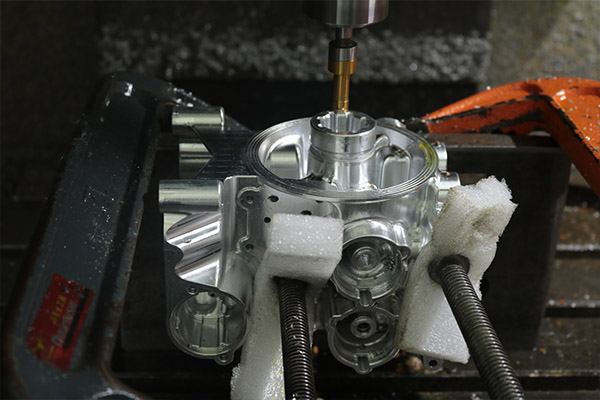Get in touch.
Dear,I will reply in 12 hours. All your message are protected!
Rapid Prototyping Services, Professional manufacturer of CNC Prototyping and 3D Prototyping in China.
CNC (Computer Numerical Control) machining is a precise and versatile manufacturing process used to create various components. However, one common challenge in CNC machining is the formation of burrs or sharp edges on the finished parts. In this article, we will explore techniques and best practices to effectively remove burrs and achieve smooth edges in CNC machining, providing insights to enhance the quality and functionality of your machined components.

1.Tool Selection:
Choose appropriate cutting tools for CNC machining to minimize burr formation. Consider using high-quality, sharp tools with the right geometry, coatings, and cutting parameters. Tools such as deburring end mills or chamfering tools can help reduce or eliminate burrs during the machining process.
2.Optimize Cutting Parameters:
Optimize cutting parameters such as spindle speed, feed rate, and depth of cut to minimize burr formation. Adjust these parameters based on the material being machined and the desired surface finish. Slower feed rates and shallower depths of cut can help reduce the chances of burr formation.
3.Contouring and Chamfering:
Utilize contouring or chamfering operations to remove burrs and smooth the edges of machined components. These operations involve using specific toolpaths to create beveled or rounded edges, eliminating sharp corners and burrs. Specify the appropriate dimensions and angles in your CAD (Computer-Aided Design) or CAM (Computer-Aided Manufacturing) software to generate the desired toolpaths.
4.Post-Machining Deburring:
Implement post-machining deburring techniques to remove any remaining burrs. Manual deburring tools such as files, deburring brushes, or sandpaper can be used to carefully remove burrs by hand. Alternatively, consider using automated deburring methods such as vibratory tumbling or media blasting to efficiently remove burrs from multiple components simultaneously.
5.Ultrasonic Deburring:
Consider ultrasonic deburring as an advanced technique for removing burrs in CNC machined components. This method involves immersing the parts in a liquid bath and subjecting them to high-frequency ultrasonic vibrations. The vibrations cause the liquid and specialized media to remove burrs and smooth the edges, resulting in a clean and uniform finish.
6.Inspection and Quality Control:
Implement a rigorous inspection and quality control process to ensure the removal of burrs and achieve smooth edges. Use precision measuring instruments such as calipers or optical comparators to check for burrs, sharp edges, or inconsistencies in the machined components. Conduct visual inspections to verify that the edges meet the specified requirements.
Conclusion:
Achieving smooth edges in CNC machining is crucial to enhance the functionality and aesthetics of machined components. By selecting appropriate cutting tools, optimizing cutting parameters, utilizing contouring and chamfering techniques, employing post-machining deburring methods, considering ultrasonic deburring, and implementing a robust inspection and quality control process, you can effectively remove burrs and achieve smooth edges in your CNC machined parts.
© 2005-2020 Shenzhen Tuowei Model Technologies Co., Ltd. | All Rights Reserved 粤ICP备11096697号